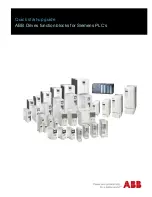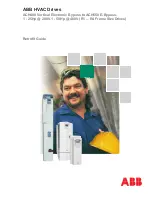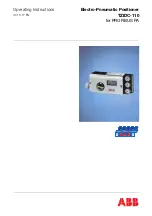
20
FORM 160.54-M1
ISSUE DATE: 10/25/2019
SECTION 2 - SYSTEM ARCHITECTURE
JCI COMPANY CONFIDENTIAL
JOHNSON CONTROLS
Flash memory card version C.MLM.01.08.xxx
and later allows use of either the Thermal-type
or the Paddle-type flow sensors on Style "F" and
later chillers. With these versions, the actual flow
sensor type present must be entered using the
Flow Switch Setpoint. For more information, see
SECTION 27 - LARGE TONNAGE CHILLER
(LTC) I/O BOARD 031-02895-000/001
• Oil Heater Outputs – Either TB1-34 or TB1-64 on
I/O Board.
• Refrigerant Level Control Default Period – Either
3.5 seconds or 10.0 seconds.
• “Oil – Variable Speed Pump-Pressure setpoint
Not Achieved” safety shutdown threshold – Ei-
ther 25 psid or 35 psid.
• Standard Coastdown Time (software version
C.OPT.01.16.xxx (and later)) – defaults to either
150 seconds or 240 seconds.
When the compressor motor is driven by an Electro-
mechanical Starter, the OptiView Control Center is
equipped with a CM-2 current module. This printed
circuit board provides current overload and power fault
protection for the compressor motor. Current trans-
formers, located in the compressor motor terminal box,
along with rectifying and calibration circuitry, provide
an analog voltage representing compressor motor cur-
rent to the CM-2 module. This signal is further condi-
tioned and provided to the microboard.
When the compressor motor is driven by a YORK solid
state starter, one of three different starters could be ap-
plied. Later production chillers are equipped with either
the Style B liquid cooled solid state starter (LCSSS) or
the medium voltage solid state starter (MVSSS).
The Style B LCSSS (
) contains
a combination logic/trigger board in the starter cabinet
that has a serial communications interface to the mi-
croboard. Early Style B LCSSS use an Opto-coupled
interface with YORK proprietary protocol. Later Style
B LCSSS (after mid 2008) use Modbus protocol (re-
quires software version C.OPT.01.18.307 or later).
The medium voltage solid state starter (
) serially communicates with the microboard
using RS-485 Modbus Protocol. Earlier vintage chill-
ers are equipped with the Style A Solid State Starter.
This starter contains a trigger board that interfaces to a
logic board that is installed inside the OptiView Con-
trol Center. The Logic board interfaces the microboard
via a multiplexed data interface.
When the compressor motor is driven by a YORK
Variable Speed Drive, there could be a Variable Speed
Drive (VSD) or a Medium Voltage Variable Speed
Drive (MV VSD) applied.
Early vintage VSDs (
an adaptive dapacity control (ACC) board that resides
in the OptiView cabinet that interfaces the microboard
using YORK proprietary protocol serial opto-coupled
communications. The ACC board monitors system pa-
rameters and controls the VSD to drive the compressor
at the slowest speed without surging, while maintain-
ing required chiller capacity.
With the later vintage VSD (
),
the ACC functionality resides in the microboard, the
ACC Board is not present and the VSD logic board di-
rectly interfaces the microboard using RS-485 Modbus
protocol serial communications.
The MV VSD (
) is also inter-
faced to the microboard with RS-485 Modbus serial
communications. All Modbus protocol applications re-
quire software version C.OPT.01.16.xxx (or later).
Serial data interface to the Building Automation Sys-
tem (BAS) is through the optional E-Link Gateway.
This printed circuit board monitors the required data
from the microboard and makes it available for the
BAS network. When BAS or ISN communications is
selected as the control source, the microboard will fol-
low the E-Link Gateway commands as well.
Certain compressors are equipped with a VGD, which
is used to reduce rotating stall conditions and associ-
ated stall noise.
Stall may occur at low load conditions with high head.
A mechanical ring, located in the compressor diffuser
passage is operated to open or close the diffuser gap.
















































